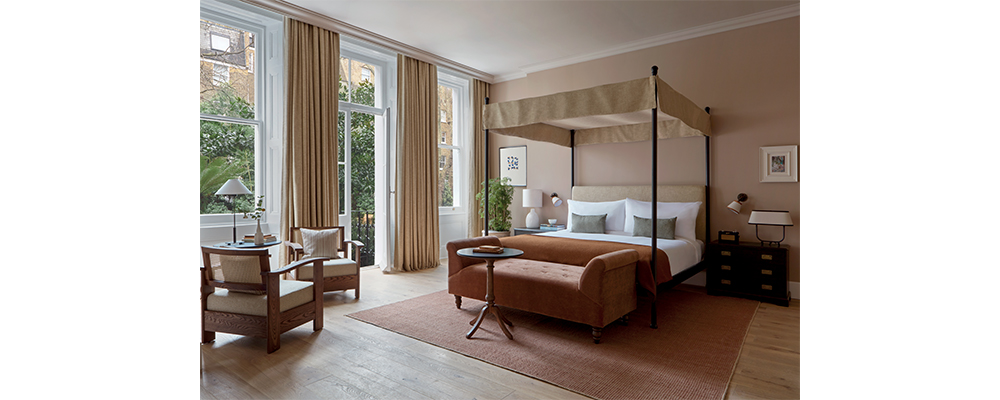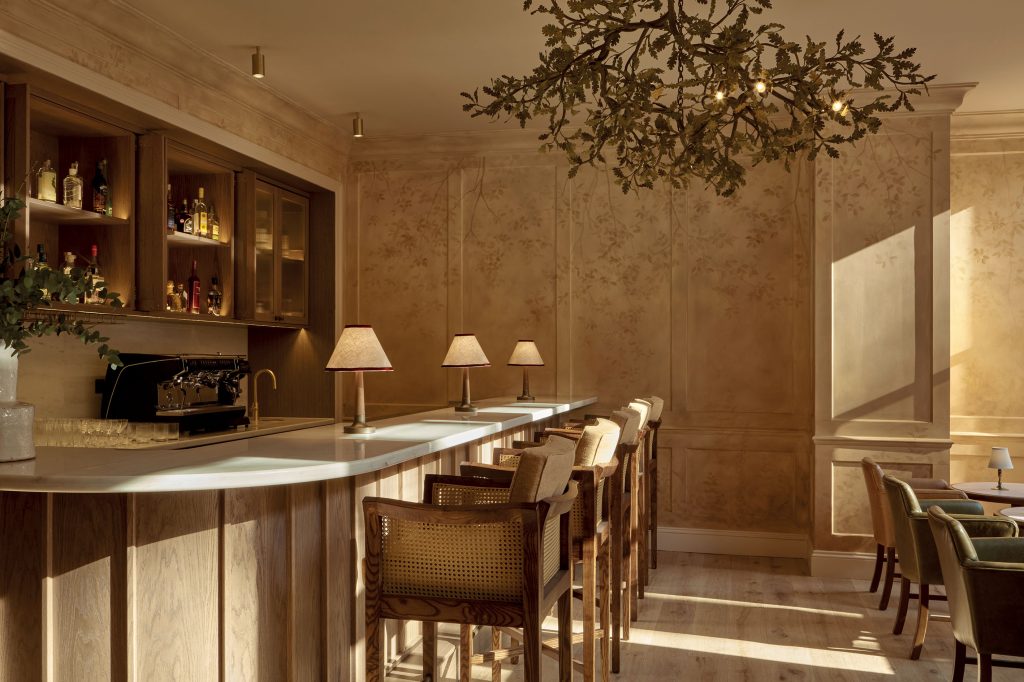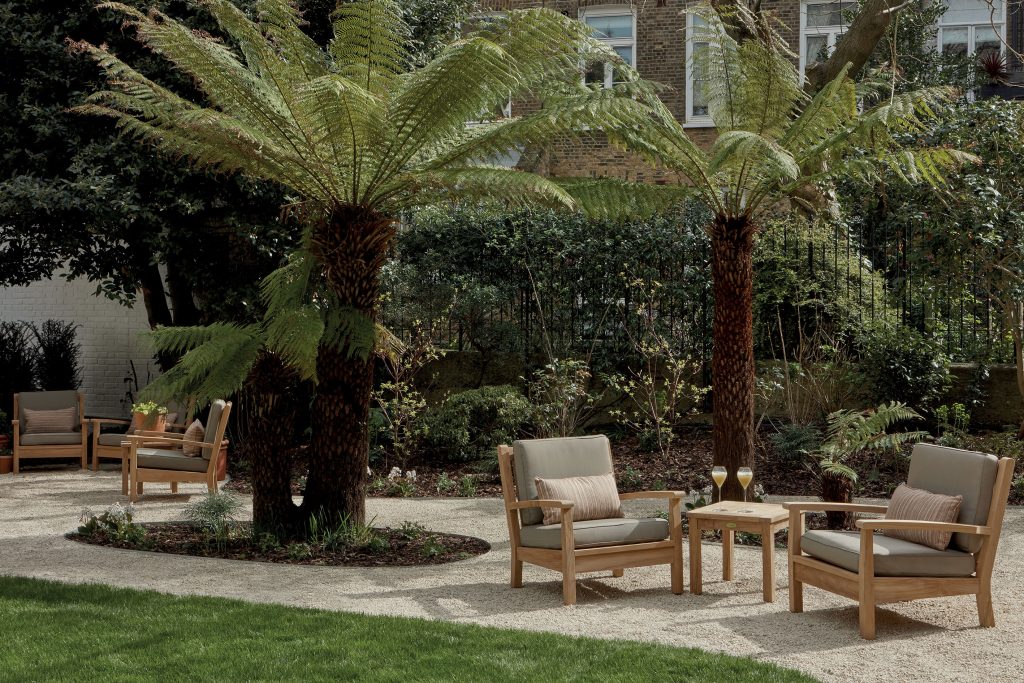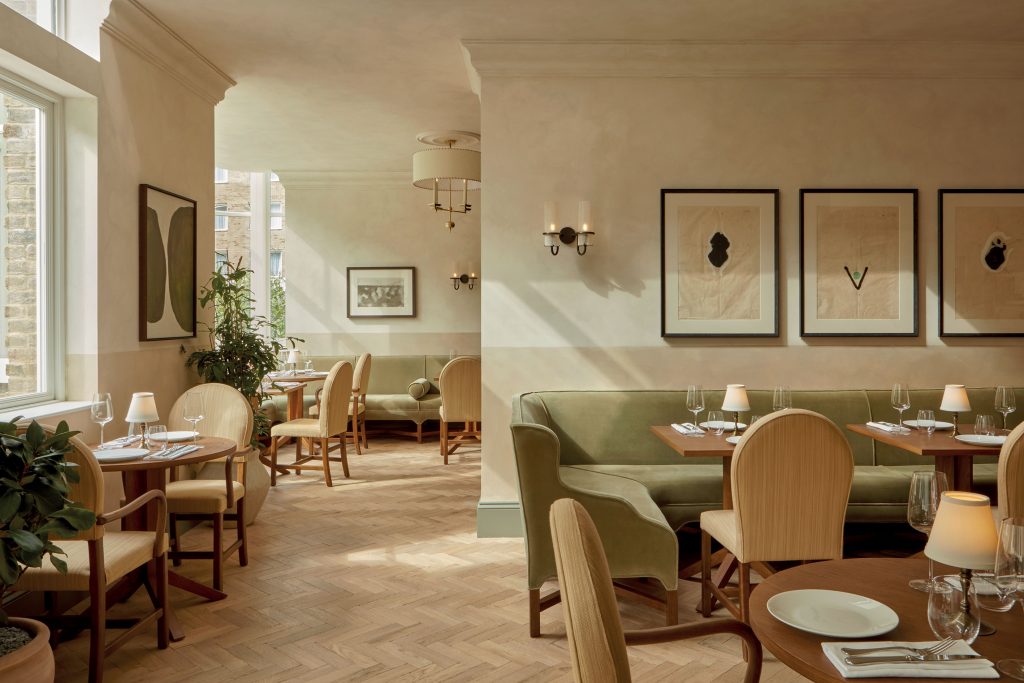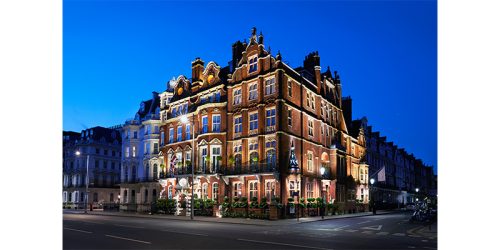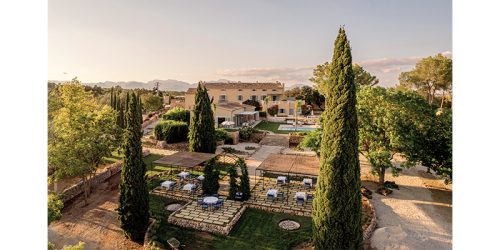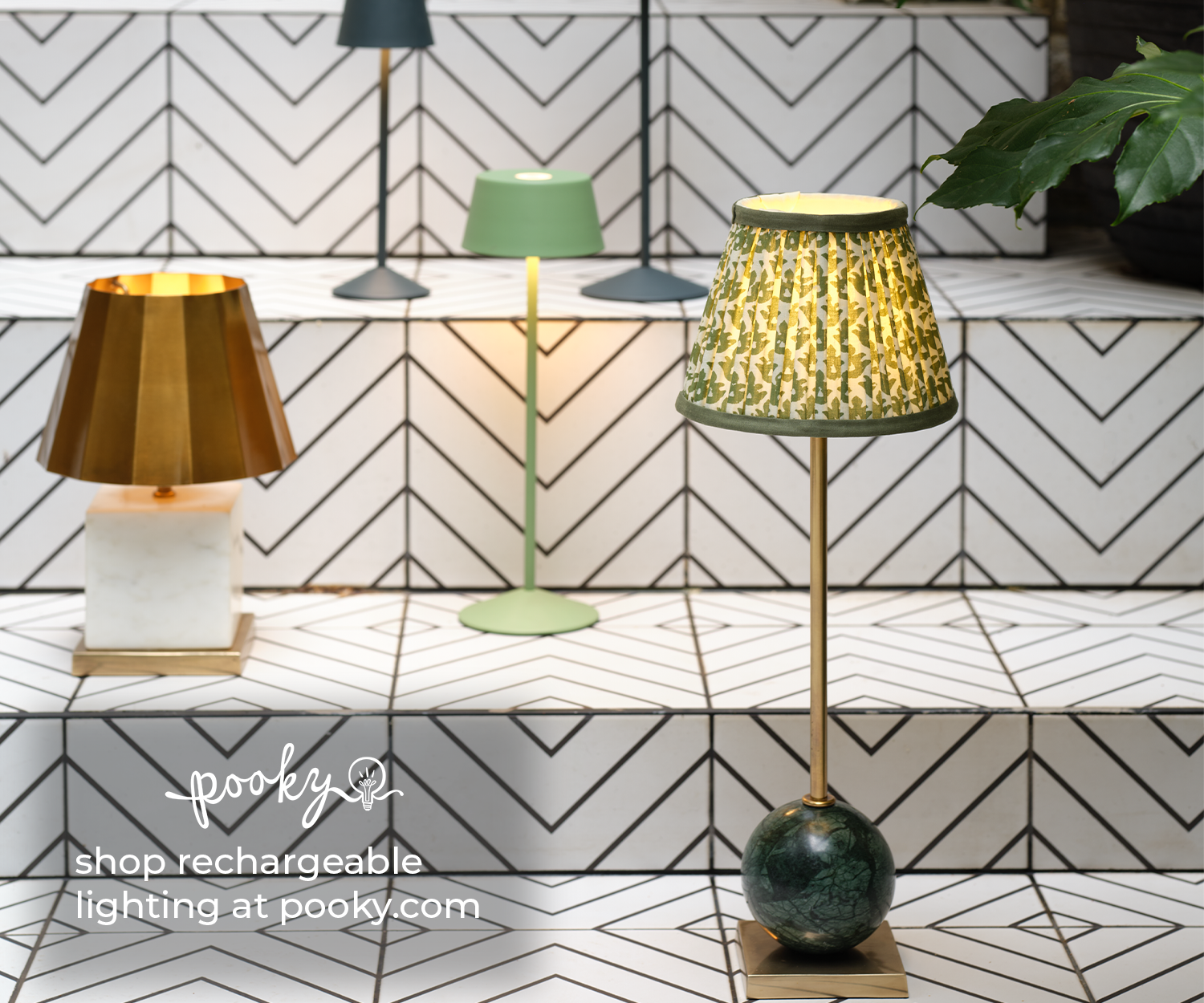TEMPLETON GARDEN, LONDON, UK
Peaceful, pared-back and rooted in its garden setting, Miiro’s London debut delivers quiet luxury and a dose of green space to Earl’s Court. 
Words by Jess Miles.
It wasn’t so long ago that a new hotel group in the making crossed our radar. After a quick glance at its brand concept and early renders, it was an easy ‘yes’ when asked whether we’d like to sit down with them to hear more.
Seemingly emerging from nowhere, Miiro’s mission was focused, organised and confidently expressed. “Our goal with Miiro is to create ‘Brilliantly Considered Stays’ that encourage guests to pause, reflect and savour every moment, in top locations like Paris, Barcelona, London and Vienna, with more to be announced soon. We want to bring them closer to the neighbourhoods they visit in a truly authentic way, and we do that through thoughtful partnerships and programming that support local businesses and encourage community engagement,” Miiro CEO Neena Gupta told us pre-launch in 2024.
But Miiro didn’t appear from nowhere. Backed by Indian travel conglomerate InterGlobe Enterprises – the force behind IndiGo airline – the brand is another string in their bow of a long-established mission to, in their words, ‘bridge gaps between people and markets’ since 1989. Still, launching a hotel brand from scratch is no small feat, whether by global conglomerate or first-time founder. “I would say that our main focuses have been differentiating Miiro from larger, well-established brands, and carving out a unique identity for Miiro in a crowded market space,” said Gupta at the time, who is also Executive Director of Group Strategy and International Hospitality at InterGlobe, and has been with the company through its trials and tribulations since 2008. “Secondly, developing and launching multiple hotels within a short timeframe is hugely demanding for any brand, especially a new one. In addition to managing several renovation projects across different cities, we are also recruiting industry-leading talent for our on-property and cluster teams, as well as building websites, social pages, booking engines, internal processes and more.”
True to plan – and impressively more or less on schedule – with a string of boutique properties newly opened across Europe, Miiro has made its UK debut just over a year after our conversation with them. Landing on the leafy row of Templeton Place, the 156 key hotel is located in Kensington, just a stone’s throw from Earl’s Court station. Spread across a cluster of reinvigorated townhouses, Templeton Garden gleams with a freshly brightened façade – offering a quiet polish to a street that’s still finding its shine.

The guest rooms lean into what interior designers Thurstan Waterworth describes as “a homely yet contemporary” mood, with antique furnishings, slim-profile skirtings, and an easy elegance that reflects the hotel’s residential setting.
Inside, Templeton Garden dances a delicate line between restraint and richness. Designed by London based studio, Thurstan, the interiors are an elegant ode to quintessential English design, tempered by the contemporary cool of Scandinavian minimalism. “Our design approach was deeply rooted in the building’s rich historical architecture,” explains James Thurstan Waterworth, founder of Thurstan. “We were inspired by its traditional forms and distinctive character… but we also wanted to bring a fresh perspective, one that felt lighter and more refined.”
This duality plays out in a warm and quietly layered palette. Neutral and earthy tones dominate across spaces, anchored by natural textures and softened edges. There’s a quiet confidence in how the project handles heritage – nothing overwrought, no overstated stories of salvaged fireplaces or ‘curated clutter’. Much of the furniture is bespoke, and antique pieces were included where it felt natural, not forced. Sustainability was also a thread that ran through sourcing decisions. “We incorporated upcycled elements wherever possible, repurposing existing materials and layering in antique furniture sourced locally to bring character and a lived-in charm,” Thurstan Waterworth explains.
Designed by London based studio, Thurstan, the interiors are an elegant ode to quintessential English design, tempered by the contemporary cool of Scandinavian minimalism.
The guest rooms, in particular, lean into what Thurstan Waterworth describes as “a homely yet contemporary” mood, with antique furnishings, slim-profile skirtings, and an easy elegance that reflects the hotel’s residential setting. Whether a compact single or a spacious suite, every room looks out either onto the neighbouring West London townhouses at the front or the fluttering greenery of the garden to the rear. There are no fake windows here, and certainly no drawing the curtains in the morning to a close-up brick wall – just real views, real air, and a welcome sense of space in the city.
Guests will feel more than at home, however, in one of the three Templeton Garden Suites, located on the ground and lower ground floors. While nothing is overtly decorative, the luxury lies in the material choices – caramel-toned drapes, furniture in soft, faded terracotta or blush velvets, stone-topped vanities and sideboards, walls soaked in Farrow & Ball heritage hues, rolltop freestanding bathtubs, and hand-tiled zellige bathrooms finished with antique brass fittings. Despite having consistently referred to the design as quiet, the wow moment does arrive by audible gasp, with ceilings high enough to cater for four poster beds, and light drenching French doors that open directly onto private terraces, with access to the garden beyond.
Public areas are where the design narrative becomes more expressive. At the heart of the hotel, the Sprout bar is a standout – not just for its layout or light but for how thoughtfully it responds to its setting. “We are particularly proud of the bar area, where we took inspiration from the garden at the rear of the hotel,” Thurstan Waterworth says, “bringing elements of nature into the space.” A hand-painted mural by decorative painter, Tess Newall, washes over one wall in dusky shadow-leaf motifs, its quiet intricacy reflective of the custom chandelier of twisted oak branches, made in London by Cox London.
At Sprout, the garden’s influence is both seen and tasted. A creative cocktail list, led by Bar Director Will Meredith, showcases seasonal ingredients through a ‘Keystone Cocktail’ concept that anchors each drink in a single defining feature – be it a colour, a note, or a flourish of greenery clipped from just outside. Choosing between a Tomato Collins, Celeriac Milk Punch or Turnip Old Fashioned feels like a leap into the complete unknown, only to be pleasantly surprised by the confident concoction of flavours. Paired with the design, the concept is romantic but grounded – a space that borrows from the garden without trying to replicate it, and one that reflects the value of collaboration in building layered, meaningful narratives in both design and experience.
That garden, of course, is the hotel’s namesake and its central asset. Views are teased throughout the interior journey, with sightlines and soft framing drawing the eye outdoors. “From the outset, we envisioned a seamless dialogue between the indoors and the outdoors,” says Thurstan Waterworth. “The presence of nature lends a softness to the interiors and fosters a sense of calm, connecting guests with the surroundings in an intuitive and beautiful way.”
This connection continues through the lobby lounge and into Pippin’s, the hotel’s neighbourhood restaurant, where the glass extension by Holland Harvey – a contemporary echo of a Victorian glasshouse – plays against the original brick. The new structure could easily have felt bolted on, but the transition between old and new, exterior and interior, is so immaculate, it takes a trained eye (or a gentle nudge from knowledgeable staff) to spot where the original building ends and the extension begins. “We reinstated some classic Victorian details, such as mouldings and cornices, but kept the profiles simple,” Thurstan Waterworth notes. “That allowed the new extension to flow seamlessly and maintain the timeless aesthetic we aimed to achieve throughout.”
Airy and open, Pippin’s is colour-drenched in two tones of limewash by Bauwerk Colour. The finish lends a softness to the room – matte, mineral, quietly textured – melting into furnishing of soft sage and sand, set against light wood parquet. The menu, led by Head Chef Liam Fauchard-Newman, leans into nostalgic British combinations – rhubarb and custard, chicken and chips – reworked for contemporary palates. It’s a warm, residential-feeling setting that reflects the hotel’s broader ambition: not just a place to stay, but a place to return to. The sentiment is echoed in the crowd, where a noticeable number of non-staying diners – seemingly local – settle in over both lunch and brunch the following morning. For something more casual, there’s also Pippin’s little sister, Pip’s – a street-facing café-come-deli offering coffee, pastries, and a place to pause for both guests and neighbours alike.
That foresight to anticipate what guests might actually want – whether a low-key neighbourhood table or just a strong flat white to go – runs through the entire property. As well as having a chicly well-equipped gym, and Le Labo toiletries in rooms, one thoughtful touch offered across all Miiro hotels is their Refresh Room: a high-spec private space where guests can shower, change and access their luggage either side of their stay. Bookable in 45-minute slots and free of charge, it makes arrival feel generous and departure less abrupt. It’s an underrated gesture that more hotels should adopt, which is perhaps reflective of InterGlobe’s background in aviation – a world where the transition points are just as important as the destination itself.
While Templeton Garden doesn’t shout, it resonates softly – in tone, in craft, and in careful decisions. There’s intention in its calming palette, and grace in its airy open flow from public spaces to the garden and through into its guestrooms and suites. It takes cues from traditional English interiors, subtly reintroducing original period details in a way that feels both natural and unforced – all while keeping pace with contemporary expectations. And while many hotels talk of blending past and present, few manage to do so with such ease and elegance.



